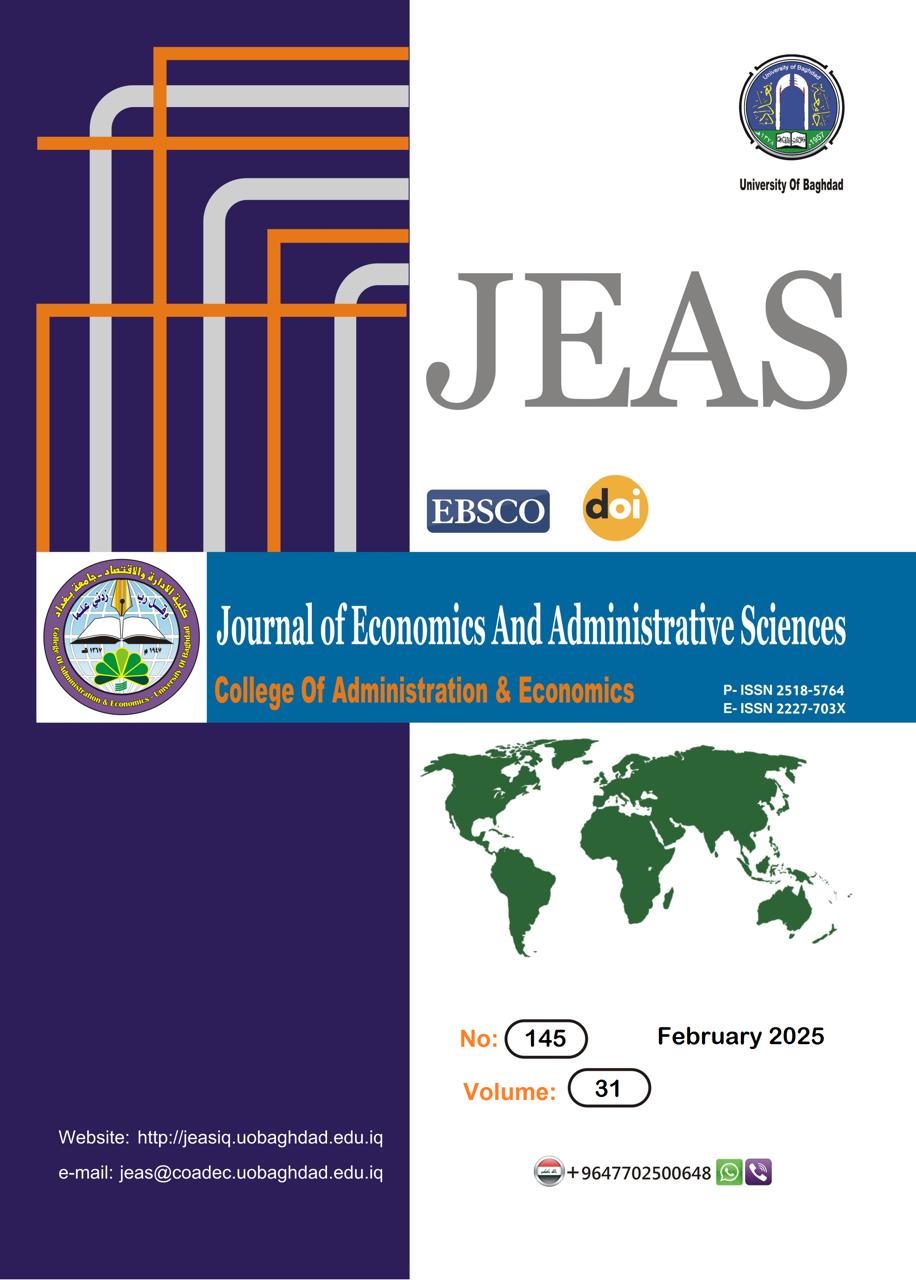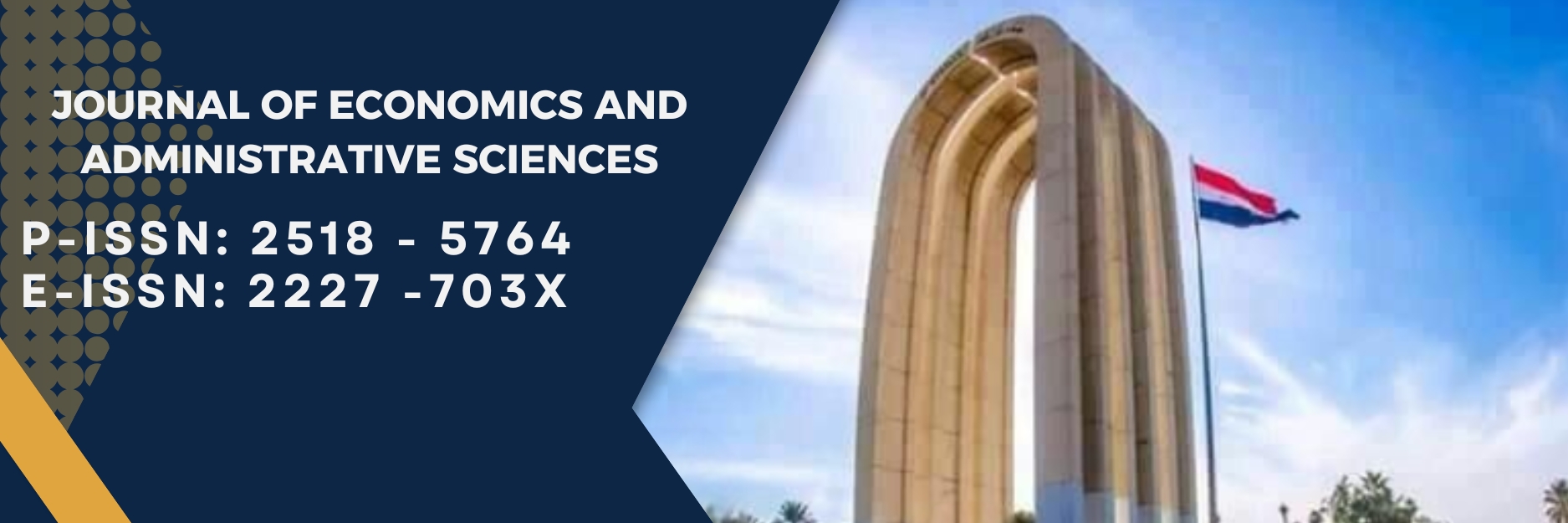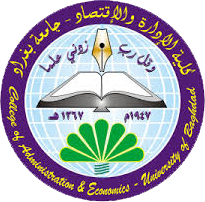Comparison Between the Partial Least Squares Method and Principal Components Using Genetic Algorithm with an Application
DOI:
https://doi.org/10.33095/s8543c81Keywords:
Multicollinearity, Partial least squares (PLS), Principal Component Analysis (PCA), Genetic Algorithm (GA), multiple linear regression.Abstract
The problem of multicollinearity among independent variables in a regression model was addressed in this study using Partial Least Squares (PLS) and Principal Component Analysis (PCA). The influence exerted by multicollinearity can deteriorate the results of regression modeling; that is, it makes the traditional technique OLS less reliable. The research is centered on applying advanced algorithms for Partial Least Squares (SIMPL and O-PLS) as well as for PCA (NIPALS and SVD) on real-life data scenarios, as well as integrating genetic algorithm (GAs) with these algorithms to optimize predictive performance.
The relative efficiency of these methods is evaluated primarily through the amplitude of the Mean Square Error (MSE) used as a criterion for comparison. The results show the effectiveness of PLS-OPLS above PCA in terms of the lowest before and after embedding genetic algorithms into the MSE. All this underpins the effectiveness of PLS in minimizing multicollinearity thereby allowing for the formulation and prediction of very highly predictive models.
More and more indication of subtle class was revealed with regard to fine tuning advanced GA technique in favor of enhancing regression modeling for complex data analysis. The ongoing research will help in opening numerous possibilities to reinforce regression methodology, especially when one factor in an array of applications representing a relatively significant level of prediction accuracy.
Downloads
References
Abdi, H. (2010), Partial least squares regression and projection on latent structure regression (PLS Regression). WIREs Comp Stat, 2: 97-106. https://doi.org/10.1002/wics.51
Abdulhadi, A. T., & Reda, S. M. (2020). Estimation of survival function using genetic algorithm. Journal of Economics and Administrative Sciences, 26(122), 440–454. https://doi.org/10.33095/jeas.v26i122.2018
Abdullah, A. N., & Abbas, B. K. (2020). Comparison between Partial Least Squares Regression and Dendritic Regression Using Simulation. Journal of Economics and Administrative Sciences, 26(120), 411–425. https://doi.org/10.33095/jeas.v26i120.1924
Albadrani, D. R. M., & Al-mawla, T. A. T. (2016). Comparison between Principal Component Regression and Partial Least Squares Methods with Application to Kirkuk Cement Plant. Tikrit Journal of Pure Science, 21(7), 185–203. https://doi.org/10.25130/tjps.v21i7.1126
Albayati, M. (2012). A practical application of analyzing statistical data using the program (SPSS). Al-Jazeera Press and Publishing.
Albayati, M. M. & Shaker, H. H. (2018). Comparison between Partial Least Squares and SVPD for Estimating Logistic Regression Model Parameters in Case of Multicollinearity Problem Using Simulation. Journal of Economic and Administrative Sciences, 24(109), 458–471. https://doi.org/10.33095/jeas.v24i109.1559
Aldouri, Y. K., AlChalabi, H., & Lundberg, J. (2020). Risk-based life cycle cost analysis using a two-level multi-objective genetic algorithm. International Journal of Computer Integrated Manufacturing, 33(10–11), 1076–1088. https://doi.org/10.1080/0951192X.2020.1757157.
Alkhafaji, M. A., & Saleh, R. A. (2021). A Statistical Study on the Parameters of the Skew Normal Distribution Depending on the Use of the Genetic Algorithm Using the Simulation Method. Journal of Physics: Conference Series, 1879(3). https://doi.org/10.1088/1742-6596/1879/3/032017
Alrawi, A. G., & Issa, A. M. (2019). Use Principal Component Analysis Technique to Dimensionality Reduction to Multi Source. Journal of Economics and Administrative Sciences, 25(115), 464–473. https://doi.org/10.33095/jeas.v25i115.1778
Alsabaah, S. A., & AlQuraishi, Z. K. M. (2018). Use Principle Component Regression Method In Addressing Linear Multiplicity Problem. Karbala University Scientific Journal, 16(2), 248–261. https://www.iasj.net/iasj/article/153425
Alsafawi, S. Y., AlDin, S. D., & Shaker, S. M. (2010). Using the Partial Least Squares Method to Eliminate Multicollinearity. Iraqi Journal of Statistical Sciences, 10(1), 115–128.
Andrecut, M. (2009). Parallel GPU implementation of iterative PCA algorithms. Journal of Computational Biology : A Journal of Computational Molecular Cell Biology, 16(11), 1593–1599. https://doi.org/10.1089/cmb.2008.0221
Ding, J., Zhao, L., Liu, C., & Chai, T. (2014). GA-based principal component selection for production performance estimation in mineral processing. Computers and Electrical Engineering, 40(5), 1447–1459. https://doi.org/10.1016/j.compeleceng.2013.12.014
Eiben , A.E & Smaith, J. (2015). Introduction to evolutionary computing. In Natural Computing Series (Vol. 28). https://doi.org/10.1007/978-3-662-43631-8_2
Elvira-Ortiz, D. A., Jaen-Cuellar, A. Y., Morinigo-Sotelo, D., Morales-Velazquez, L., Osornio-Rios, R. A., & Romero-Troncoso, R. de J. (2020). Genetic algorithm methodology for the estimation of generated power and harmonic content in photovoltaic generation. Applied Sciences (Switzerland), 10(2). https://doi.org/10.3390/app10020542
Hassan, M. M., Shaker. H. H., & Mohammed. N. J. (2020). Comparison between the two methods of regression of the letter and regression of the principal components using Monte Carlo simulation through the mean square error (MSE). Journal of Al-Rafidain University College of Science, 46(1), 335–352. https://doi.org/10.55562/jrucs.v46i1.86.
Hubert, M., & Branden, K. V. (2003). Robust methods for partial least squares regression. Journal of Chemometrics, 17(10), 537–549. https://doi.org/10.1002/cem.822
Hussain, J., & Nassir, A. (2015). Cluster Analysis as a Strategy of Grouping to Construct Goodness-of-Fit Tests when the Continuous Covariates Present in the Logistic Regression Model. British Journal of Mathematics & Computer Science, 10(1), 1–16. https://doi.org/10.9734/bjmcs/2015/18616
Hussein, S. M., & Saleh, R. A. (2014). Comparison of some robust methods for estimating partial least squares regression parameters. Journal of Economics and Administrative Sciences, 20(75), 413–431. https://doi.org/10.33095/jeas.v20i75.587
Jiang, S., Tian, H., Wang, Y., Jin, L., Rong, J., Kang, S., ... & Liu, Z. (2023). Optimization of source pencils loading plan with genetic algorithm for gamma irradiation facility. Radiation Physics and Chemistry, 207, 110839. Https://Doi.Org/10.1016/J RADPHYSCHEM.2023.110839.
Kale, I. R., Pachpande, M. A., Naikwadi, S. P., & Narkhede, M. N. (2022). Optimization of advanced manufacturing processes using socio inspired cohort intelligence algorithm. International Journal for Simulation and Multidisciplinary Design Optimization, 13. https://doi.org/10.1051/smdo/2021033
Kaneko, H. (2022). Genetic Algorithm-Based Partial Least-Squares with only the First Component for Model Interpretation. ACS Omega, 7(10), 8968–8979. https://doi.org/10.1021/acsomega.1c07379
Leardi, R. (2003). Genetic algorithm-PLS as a tool for wavelength selection in spectral data sets. Data Handling in Science and Technology, 23(C), 169–196. https://doi.org/10.1016/S0922-3487(03)23006-9
Liu, C., Zhang, X., Nguyen, T. T., Liu, J., Wu, T., Lee, E., & Tu, X. M. (2021). Partial least squares regression and principal component analysis: Similarity and differences between two popular variable reduction approaches. General Psychiatry, 35(1), 1–5. https://doi.org/10.1136/gpsych-2021-100662
Liu, J., & Wong, D. S. H. (2011). Developing soft sensors based on orthogonal projections to latent structures with kernel algorithm. IFAC Proceedings Volumes (IFAC-PapersOnline), 44(1 PART 1), 14342–14347. https://doi.org/10.3182/20110828-6-IT-1002.00100
Mohammed, H. Y. and Mohammed, L. A. (2020). In the analysis of the Principle components of kernel. Journal of Management and Economics, 123, 376–394. https://doi.org/10.4324/9781315755533-9
Ramzan , S., & Zahid, F.M. (2010). prediction method for Time- series regression models with multicollinearity. World Applied Sciences Journal, 11(4), 443–450.
Saleh, R. A. (2016). Comparison between partial least squares and principal component methods using simulation. Journal of Economics and Administrative Sciences, 22(87), 50–71. https://doi.org/10.33095/jeas.v22i87.725
Samosir, R. D., Salaki, D. T., & Langi, Y. (2022). Comparison of Partial Least Squares Regression and Principal Component Regression for Overcoming Multicollinearity in Human Development Index Model. Operations Research: International Conference Series, 3(1), 1–7. https://doi.org/10.47194/orics.v3i1.126
Shang, X., Li, X., Morales-Esteban, A., & Chen, G. (2017). Improving microseismic event and quarry blast classification using Artificial Neural Networks based on Principal Component Analysis. Soil Dynamics and Earthquake Engineering, 99(May), 142–149. https://doi.org/10.1016/j.soildyn.2017.05.008
Van Roon, P., Zakizadeh, J., & Chartier, S. (2014). Partial Least Squares tutorial for analyzing neuroimaging data. The Quantitative Methods for Psychology, 10(2), 200–215. https://doi.org/10.20982/tqmp.10.2.p200
Published
Issue
Section
License
Copyright (c) 2025 Journal of Economics and Administrative Sciences

This work is licensed under a Creative Commons Attribution-NonCommercial-NoDerivatives 4.0 International License.
Articles submitted to the journal should not have been published before in their current or substantially similar form or be under consideration for publication with another journal. Please see JEAS originality guidelines for details. Use this in conjunction with the points below about references, before submission i.e. always attribute clearly using either indented text or quote marks as well as making use of the preferred Harvard style of formatting. Authors submitting articles for publication warrant that the work is not an infringement of any existing copyright and will indemnify the publisher against any breach of such warranty. For ease of dissemination and to ensure proper policing of use, papers and contributions become the legal copyright of the publisher unless otherwise agreed.
The editor may make use of Turtitin software for checking the originality of submissions received.


























